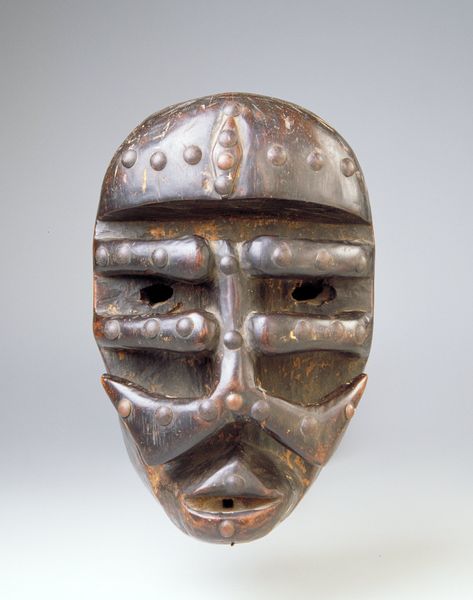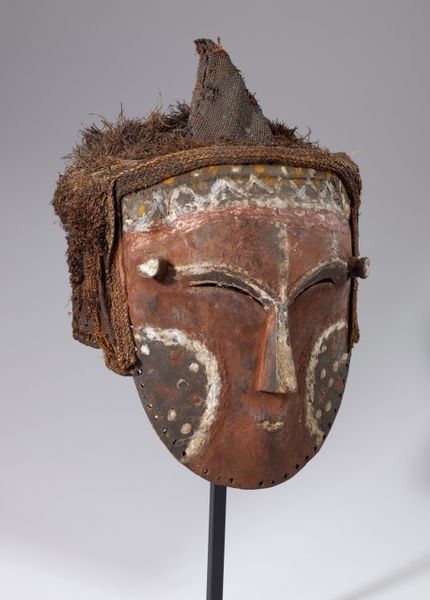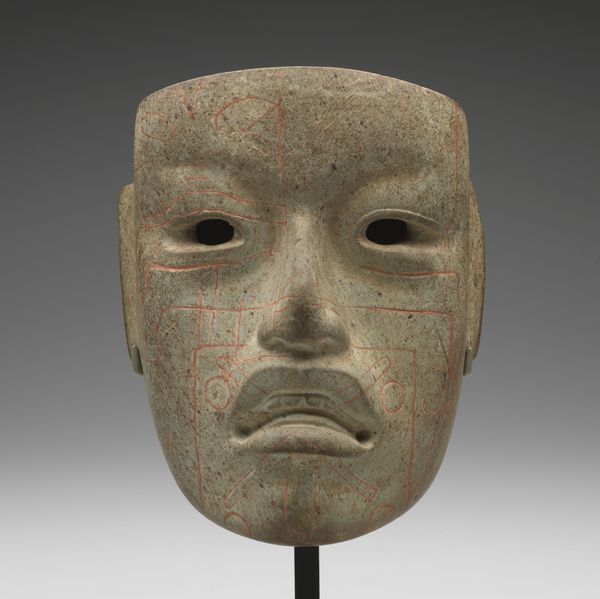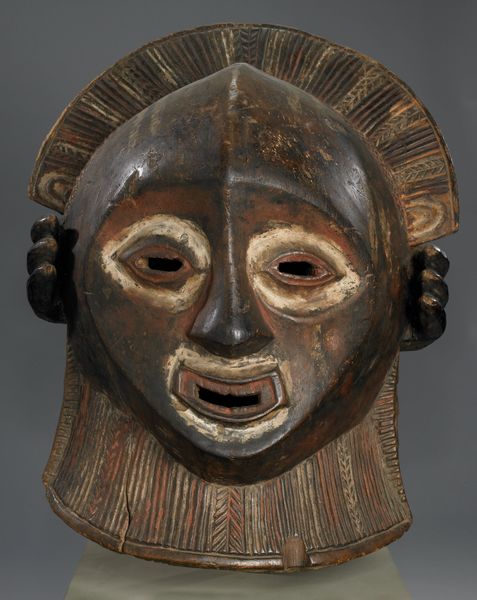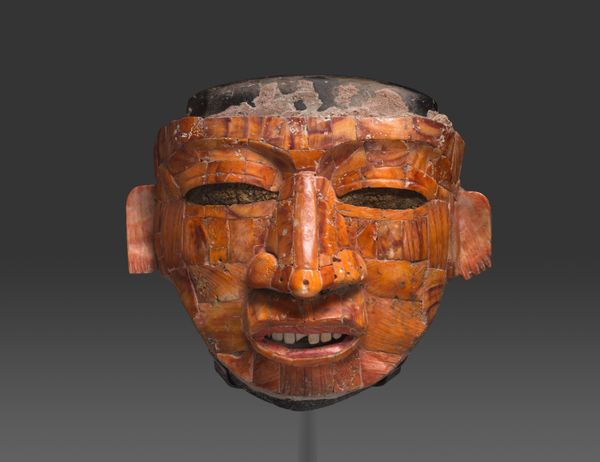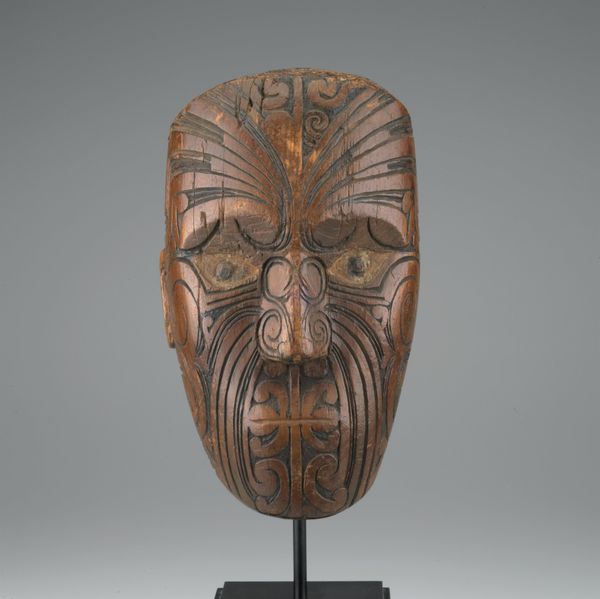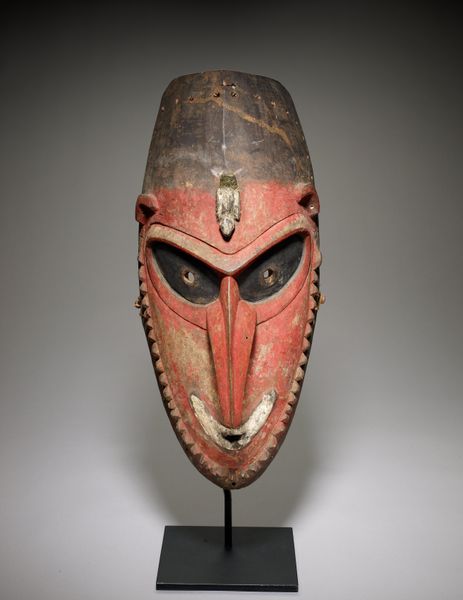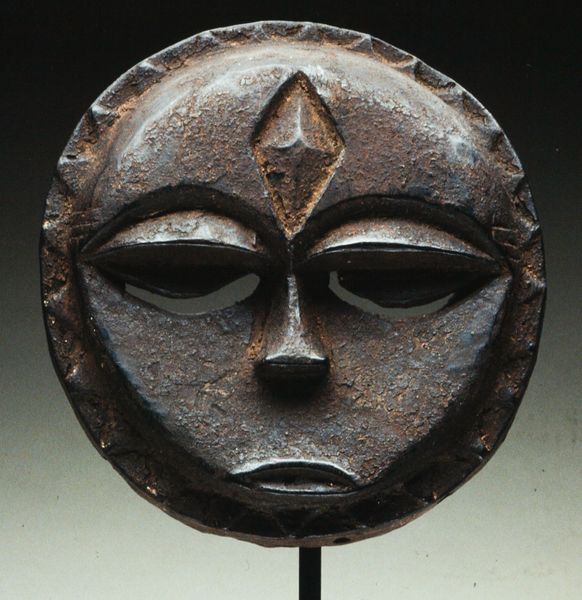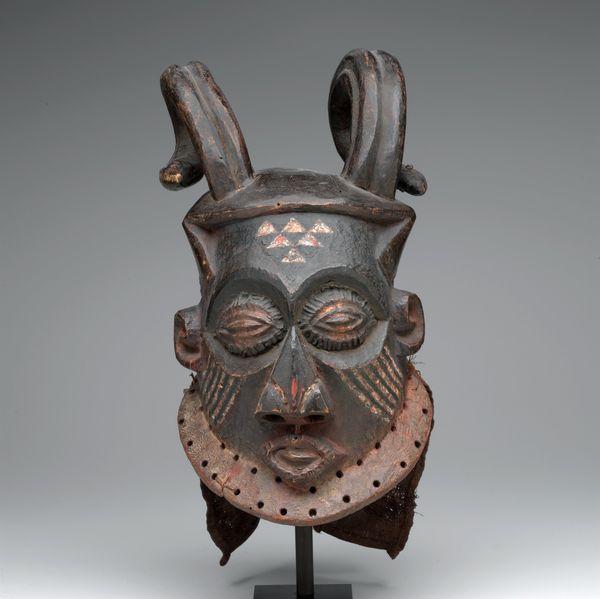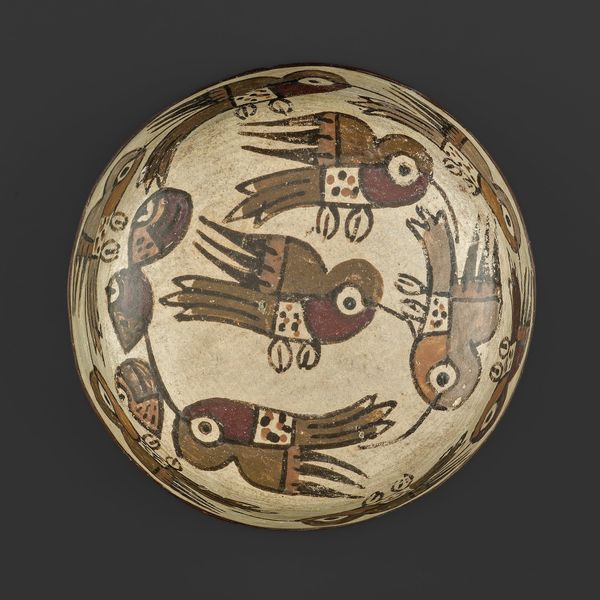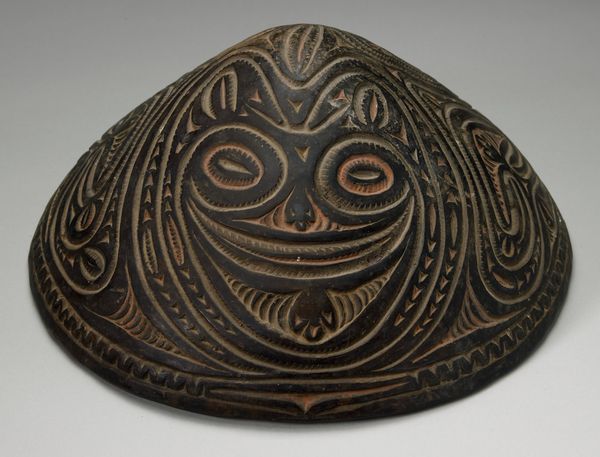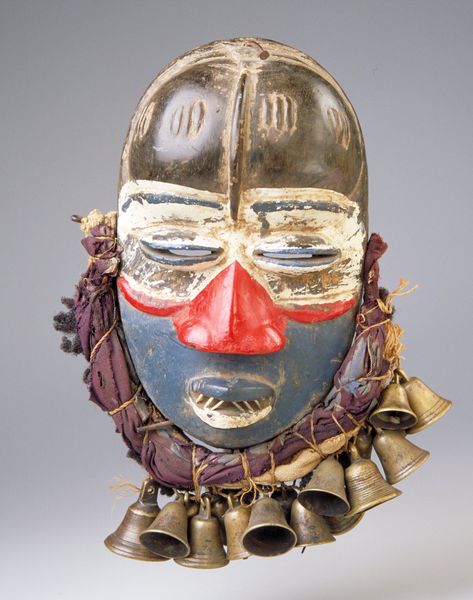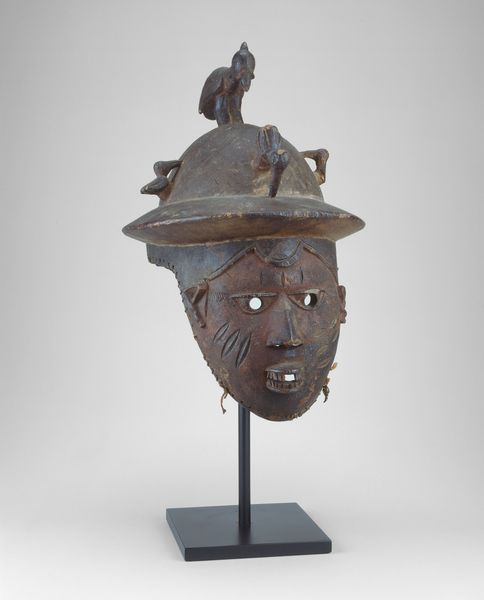
mixed-media, carving, wood
#
mixed-media
#
carving
#
wood
#
indigenous-americas
Dimensions: 3 3/8 x 7 1/4 x 7 13/16 in. (8.57 x 18.42 x 19.84 cm)
Copyright: Public Domain
Editor: Here we have a frontlet, circa 1820, created by the Tsimshian people. It’s made of carved wood and pigment, and inlaid with iridescent shell. It's really striking; the face seems so serious, almost stern. What can you tell me about this piece? Curator: This work invites a deep consideration of the materials and labor involved in its creation, and their relation to the social structure of the Tsimshian. We have wood, meticulously carved; pigment, painstakingly applied; and those beautiful shells, likely obtained through extensive trade networks. What does that combination of materials suggest to you about status and access? Editor: Well, the different materials suggest maybe different levels of skill to obtain them? Or perhaps indicate the rank of the person who would have worn it? Curator: Precisely. Consider the labour. Carving requires specialized knowledge and tools. Pigment preparation could have been equally complex. Sourcing those shells –that demands trade and exchange relationships. This frontlet embodies a convergence of different craft specializations, all contributing to a single object of high status. Think of the maker, the carver, the trader. Editor: So, it is less about what the frontlet depicts, and more about what it represents in terms of economic relationships and craft practices? Curator: Exactly. This piece isn’t just an aesthetic object; it is a material record of Tsimshian social and economic systems, illustrating how craft, labor, and trade interweave. It makes me think about how the division of labor impacts artistry today. Editor: I’m starting to look at it with new eyes, considering all the work and social context embedded in these materials. Curator: Seeing art through a material lens can reveal so much about past societies, as well as our own.
Comments
minneapolisinstituteofart almost 2 years ago
⋮
Frontlets are masterpieces of Northwest Coast art, and many of the finest were produced by the Tsimshian. The frontlet formed part of an imposing decorative headdress worn by both men and women as the crowning feature of a ceremonial outfit that indicated wealth and status. This one is a rare, round example.The mask portrays a man transforming into a bird, perhaps an eagle, one of the four Tsimshian clans. Bright paint, now faded, is still visible on the mask's face, which is carved in this culture's classic early style. A border of shimmering abalone shell, a valuable item traded from California, rings the face. Together with its surrounding headdress, the frontlet produced an effect of great splendor.
Join the conversation
Join millions of artists and users on Artera today and experience the ultimate creative platform.

